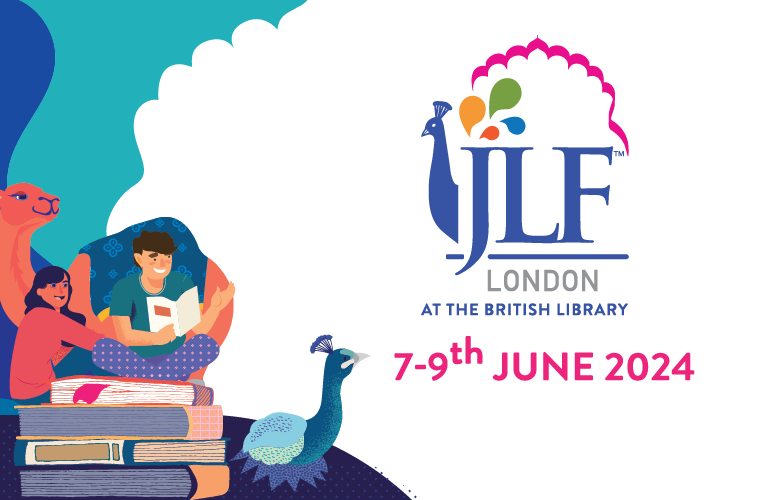

My Sunday Evening with Pamuk
As part of JLF Brave New World, Nobel Laureate Orhan Pamuk shed light on the process the fiction writer follows in an animated Sunday-evening conversation with novelist Chandrahas Choudhury. Pamuk is no stranger to the Jaipur Literature Festival - the webinar called to mind his session at the Festival in 2011, also moderated by Choudhury.
One of the defining characteristics of Pamuk’s writing is his tendency to tell the story from the perspective of different characters, sometimes even inanimate objects. In his book My Name is Red, the list of narrators includes the protagonist Black, Black’s uncle, Shekure, a dog, a horse, the murderer and various artists. On reading it, it seems that the narrative was less driven by the need to sustain mystery but to expand the empathy of the reader by letting a myriad of voices tell their perspective of the story.
“A lot of original things I do in my fiction depends on who is telling the story,” he admitted in his conversation with Choudhury. But this type of structure for a mystery novel is not entirely new, he said, and went on to mention his influences. “I thought about this a lot and also after William Faulkner used the device of telling stories from different points of view, and this was developed especially after James Joyce in the 1920s and 30s; I learnt so much.” This might also have had a special role in a story set far back in history- it was perhaps useful for Pamuk to eschew the omniscient narrator and to instead use a first-person-telling in order to make the dramas of 17th-century Istanbul relatable to the modern reader.
The conversation then switched to the present day. The ongoing pandemic has galvanised a string of writers to add plagues and pandemics into contemporary novels; a point brought to light with the editorial director of HarperCollins who recently counselled writers against shoehorning the coronavirus into their plots. What did the Nobel Laureate think about the role of writers in these extraordinary times?
Pamuk’s answer cut through the mist, “First off, I’m not that utilitarian - literature can't be that influential during an earthquake, a revolution, or a pandemic, but it doesn’t mean it’s not important. I am modest about the use of literature.” He also highlighted an important point about the impetus to write fiction - it is after all imagination that stirs the novelist, fired by a possibility to bridge the gap between the self and the other. In that context, it is no surprise that the greatest plague novels - Daniel Defoe’s ‘Journal of the Plague’, Albert Camus’ ‘La Peste’ or Manzoni’s ‘The Betrothed’ - were written by people who never actually experienced a pandemic. “Strangely,” he added, “people who lived through it could never fully form their ideas for novels. But remember,” he cautions against being too dismissive, “the art of the novel was only formulated 170 years ago, and plagues are not so common.”
Towards the end of the discussion, his book ‘The Museum of Innocence’ was brought up by a viewer. “What is the place of love in your books?” they asked. ‘The Museum of Innocence’, his first novel since winning the Nobel Prize has famously garnered mixed reviews. It is a story of a lovesick Kemal who, following a tryst with Fusun, a young shopgirl and his distant relative, breaks off his engagement and chooses to pursue Fusun, albeit a bit too late. When he finally finds Fusun, she is married. The only way he sees fit to keep beautiful Fusun in his life is to befriend the parents and the husband, and over the next nine years, he visits them frequently, eating dinner with them every night. Throughout this period, Kemal becomes an obsessive collector of objects around Fusun - cigarette butts, ashtrays, cups, slippers, hair pins and salt-shakers - and arranges this memorabilia in his “museum of innocence”. While the novel has been lauded for its richly detailed portrayal of Istanbul and its gorgeous storytelling, it has often been said to lack in solid insights on the nature of love or the relationship between Kemal and Fusun beyond the carnal nature of their association. One is left wanting to know more of Fusun’s perspective at the receiving end of this obsessive love and the single-minded pursuit of objects surrounding her life. Or maybe that is the fiction-writer’s craft - the liberty to leave unsaid what he chooses?
It is, however, Pamuk’s understanding of love that remains central to his novels. “I have a lot of love in my books – ‘The Museum of Innocence’ that self-consciously wants to be a novel of love. When you say love, people want to hear flowery, nice, sweet, happy things but my love is like a traffic accident. It happens to us, it’s not in our control, it is important and it hurts. Why don’t we try to understand it instead of sugarising it? It can be both sweet and destructive.”


Leave a comment